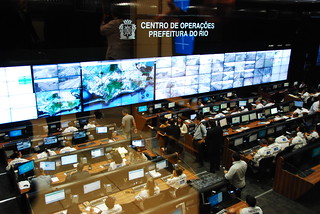Why a City’s Not a Country

UN Headquarters, New York, NY
|
We all have the currency of a country or two in our wallets; maybe a passport too. We can be brought to tears when we see ‘our’ flag unfurled at the Olympics or a World Cup. Sure there are great sporting rivalries between cities like Milan and Barcelona, Sao Paulo and Rio de Janeiro, and (in that other football) Dallas vs. Washington. But it’s countries that need flags and currencies, languages and laws, to inspire passion and fidelity. Running a country is about protecting an idea, an ideal, and a dream. Psychologically and physically countries have borders – barriers to entry and exit; people, ideas, money – it all needs to be controlled by a national authority.
 The next time you're in a new city, maybe jet-lagged, try to wake-up early and take a walk: The earlier the better. Watch as the city wakes, the merchants restock their shelves and workers take away the waste. Street sweepers and garbage collectors take advantage of the quiet streets; people open offices and stores; the calm before the rush. Perhaps your hotel is near a market – check out how early the bakers and farmers start working. A few newspapers are still delivered before the sun rises.
The next time you're in a new city, maybe jet-lagged, try to wake-up early and take a walk: The earlier the better. Watch as the city wakes, the merchants restock their shelves and workers take away the waste. Street sweepers and garbage collectors take advantage of the quiet streets; people open offices and stores; the calm before the rush. Perhaps your hotel is near a market – check out how early the bakers and farmers start working. A few newspapers are still delivered before the sun rises. The care and feeding of cities is likely the world’s largest business; it’s certainly one of the fastest growing. With an additional 2.5 billion people headed to cities in the next 30 years, providing these ‘customers’ with energy, water, transportation and waste management is critical for local government, as well as a huge opportunity for the private sector. Utilities are big business.
The care and feeding of cities is likely the world’s largest business; it’s certainly one of the fastest growing. With an additional 2.5 billion people headed to cities in the next 30 years, providing these ‘customers’ with energy, water, transportation and waste management is critical for local government, as well as a huge opportunity for the private sector. Utilities are big business.